National Football League Free Agency News 2025: An All-Time Roster Reshuffle
The National Football League offseason is defined by two major events: the draft, which builds the future, and free agency, which wins the present. There is no period in the sports calendar that captures the sudden, seismic shifts of a competitive landscape quite like the opening of the NFL's new league year. The moment contracts expire, a multi-billion dollar bidding war begins, where a single signature can catapult a struggling franchise into instant contention or send a ripple of uncertainty through a Super Bowl favorite.
The 2025 NFL free agency news cycle has already delivered on the hype, setting an unprecedented pace for blockbuster signings, surprise trades, and strategic, under-the-radar moves. Bolstered by a massive, record-setting salary cap, teams had the flexibility—and the inclination—to be aggressive. Star quarterbacks changed addresses, dominant defensive players reset the market for their positions, and legendary veterans found new homes, shocking fans and pundits alike.
This comprehensive breakdown will take you through the whirlwind of the 2025 free agency period, detailing the biggest NFL free agency moves 2025, analyzing which teams were the biggest winners, examining the crucial role of the NFL salary cap rules 2025, and tracking the high-profile players who are still on the market. The road to the next Super Bowl LIX started with these signatures, and the league will never look the same.
What Are the Biggest NFL Free Agency Moves in 2025?
The 2025 free agency period will be remembered for the sheer volume of high-profile quarterback movement and defensive line acquisitions that immediately shifted the power structure in both conferences.
The marquee signing that dominated headlines was the Seattle Seahawks landing quarterback Sam Darnold on a massive three-year, $100.5 million contract. Coming off a career-resurgence season, Darnold's move signals a complete change in direction for the Seahawks, instantly making them a dark horse contender in the NFC West and ending the era of veteran Geno Smith in Seattle.
In a move equally stunning, the New York Jets invested in another young signal-caller, signing Justin Fields to a two-year, $40 million deal. The former Bears and Steelers QB now gets a fresh start and a clear path to lead a franchise desperate for stability, creating a high-upside gamble for the AFC East.
The receiving market also produced significant drama. While some big names were retained, a surprising wave of veteran talent hit the market through unexpected releases and trades:
Davante Adams was released by the Jets and quickly signed a two-year, $46 million deal with the Los Angeles Rams, creating a dream-team veteran pairing with Matthew Stafford and instantly giving the Rams one of the NFC's most potent offenses.
The New England Patriots made a shocking splash by acquiring veteran wideout Stefon Diggs (via trade/signing a three-year, $69 million extension), providing their new-look offense with the undisputed WR1 it desperately needed.
Veteran wideout Cooper Kupp also changed hands, joining the Seattle Seahawks on a three-year, $45 million contract, re-pairing with Darnold and giving Seattle a formidable receiving duo.
On the defensive side, two blockbuster deals redefined the price for pass rush:
The Arizona Cardinals made a huge commitment to their defensive front by signing Pro Bowl edge rusher Josh Sweat to a four-year, $76.4 million deal, giving them the elite pass-rushing threat they have lacked.
Veteran edge rusher Khalil Mack was released by the Chargers but quickly found a new home, re-signing with the Los Angeles Chargers on a one-year, $18 million deal, proving he can still command top dollar even in a short-term commitment.
These moves, particularly the turnover at the quarterback position and the redistribution of superstar wide receivers, could immediately shift the balance of power. The AFC has become even more volatile, and the NFC West now looks like a two-team race between the Rams and the Seahawks.
Which Teams Made the Most Significant Signings?
While big individual contracts grab attention, the true winners of free agency are the franchises that execute a cohesive strategy, often blending superstar acquisitions with smart, value-driven depth signings.
The Aggressors: Seattle Seahawks & New York Jets
Both the Seahawks and the Jets stand out as the most aggressive teams. The Seahawks not only acquired Sam Darnold to lead their offense but also invested heavily in proven talent like wide receiver Cooper Kupp and defensive lineman DeMarcus Lawrence (three years, $32.49 million), signaling an all-in approach to compete right now.
The Jets, despite the uncertainty surrounding the quarterback position after the departure of Aaron Rodgers, made a calculated gamble on the upside of Justin Fields. Crucially, they also bolstered their secondary with Brandon Stephens (three years, $36 million) and Andre Cisco (one year, $10 million), demonstrating a clear focus on building a deep, young core on both sides of the ball.
The Rebuilding & Re-Tooling Squads
Arizona Cardinals: The Cardinals, a team clearly in a rebuild phase, wisely used their substantial cap space to acquire elite talent rather than overpaying for B-tier players. The addition of Josh Sweat (EDGE) and veteran quarterback Jacoby Brissett (two years, $12.5 million) provides immediate impact on defense and a high-floor veteran backup for their young QB.
Indianapolis Colts: The Colts took a significant swing by signing former Giants quarterback Daniel Jones (one year, $14 million), aiming for a low-risk, high-reward option at the game's most important position. Their signing of safety Talanoa Hufanga (three years, $45 million) also drastically improved a secondary that needed an injection of youth and playmaking ability.
Value-Driven Signings
The Los Angeles Rams managed to make an incredible splash with Davante Adams while also re-signing key offensive tackle Alaric Jackson (three years, $57 million), providing stability to their offensive line. The New England Patriots were also surprisingly efficient, not only landing Stefon Diggs but also making multiple savvy signings on the defensive side, including veteran linebackers and tackles, signaling a commitment to a tough, fundamentally sound team identity.
How Do Free Agency Decisions Affect the Upcoming Season?
Free agency is more than just names and numbers; it's about team chemistry, locker room leadership, and depth. The immediate impact of a signing can be felt far beyond the box score.
Short-Term Splash vs. Long-Term Roster Building
Some teams prioritize the "short-term splash" by signing an aging superstar to a huge one-year or two-year deal with a high salary (Russell Wilson to the New York Giants on a one-year, up to $10.5 million deal; DeAndre Hopkins to the Baltimore Ravens for one year, $5 million). These moves immediately generate excitement and fill a single, critical void, often elevating a contender into a favorite. The Ravens' acquisition of Hopkins gives them a proven, red-zone threat that could be the final missing piece for a Super Bowl push.
In contrast, teams focused on long-term roster building prioritize younger players, guaranteed money structure, and multi-year extensions. The Green Bay Packers re-signing of interior lineman Aaron Banks to a four-year, $77 million deal ensures stability for their young quarterback for the foreseeable future, a textbook example of long-term planning. The Dallas Cowboys retaining their defensive tackle Osa Odighizuwa (four years, $80 million) also locks down a key player in his prime, maintaining the foundation of their defense.
A single, crucial signing can elevate a team to playoff contention. The Houston Texans' aggressive moves to solidify their offensive line with Cam Robinson and Trent Brown instantly provide better protection for their young quarterback, shifting their focus from rebuilding to contending in the AFC South. Similarly, a defensive signing like Dre Greenlaw joining the Denver Broncos (three years, $35 million) adds a proven, physical leader to a defense that needed an identity.
Which Players Are Still Available in NFL Free Agency?
While the initial frenzy of the top NFL free agent signings 2025 has passed, several high-profile players remain on the market, creating suspense as training camps approach. These available NFL free agents 2025 are often veterans whose price tag is dropping or young players looking for a specific scheme fit.
High-Profile Players Still Seeking a Home:
| Player Name | Position | Previous Team | Potential Landing Spots |
| Amari Cooper | Wide Receiver | Cleveland Browns (Released) | Bills, Cowboys, Dolphins (Teams needing proven WR2/Veteran presence) |
| Justin Simmons | Safety | Denver Broncos (Released) | Eagles, Packers, Chargers (Contenders needing elite safety play) |
| Christian Wilkins | Defensive Tackle | Las Vegas Raiders (Released) | Teams with high cap space (e.g., Raiders, Lions) looking for a run-stuffer |
| Kendall Fuller | Cornerback | Washington Commanders | Ravens, Chiefs (Contenders needing reliable veteran CB depth) |
| Diontae Johnson | Wide Receiver | Cleveland Browns (Released) | Falcons, Panthers (Teams desperate for a starting-caliber WR) |
| Joe Flacco | Quarterback | Cleveland Browns | 49ers, Bills (Backup QB for Super Bowl contenders) |
Veteran players such as Joe Flacco and Justin Simmons are classic examples of high-impact free agents who may wait for the perfect fit—or for an injury to strike a contender. Their experience and proven production make them ideal midseason targets who could immediately step into a starting role, a tactic we often see late in the offseason.
How Do Salary Cap Rules Shape NFL Free Agency Deals?
The engine driving the 2025 free agency period was the colossal NFL salary cap number, set at a record $279.2 million per club. This substantial jump (up nearly $24 million from the previous year) gave most teams unprecedented flexibility, enabling the huge contracts we saw handed out to players like Sam Darnold and Josh Sweat.
The salary cap is not just a ceiling; it's a financial puzzle that front offices must solve, and their management of the cap truly separates the smart operations from the struggling ones.
The Cap Management Toolkit
Restructures: Teams heavily utilize contract restructures, converting large portions of a player's base salary into a signing bonus. The bonus is then pro-rated, or spread out, over the life of the contract, lowering the current year's cap hit. This is what allowed teams like the New Orleans Saints—who are perpetually near the cap limit—to create enough room for signings like defensive end Chase Young (three years, $51 million).
Back-Loaded Contracts: Many of the largest deals are back-loaded, meaning the highest cap hits are scheduled for the later years of the contract. This defers the financial pain until the cap has increased further, or until the team decides to cut or trade the player. Sam Darnold's three-year, $100.5 million deal likely follows this model, betting on his performance (and the cap's continued increase) to make the cap hits in years two and three more manageable.
Franchise Tags: The franchise tag is the ultimate tool for cap management, allowing a team to secure one star player for one year at the average of the top five salaries at that position, or 120% of the player's previous salary (whichever is greater). The Cincinnati Bengals utilized the tag to retain star wide receiver Tee Higgins, ensuring they did not lose one of their most valuable offensive weapons and giving them more time to negotiate a long-term deal. The Kansas City Chiefs did the same with star guard Trey Smith.
Effective NFL salary cap rules 2025 management involves knowing when to spend big and when to hold back. Franchises that entered the period with significant cap space, like the Cardinals and Colts, were able to capitalize on the inflated market. Those who have consistently struggled with cap compliance, like the Saints, are forced to be far more creative with restructures and short-term deals.
FAQ Section
When did NFL free agency 2025 officially begin?
The official start of the 2025 NFL League Year and the free agency signing period began at 4:00 p.m. ET on Wednesday, March 12, 2025. This date followed a two-day "legal tampering" period, during which teams could negotiate with the certified agents of prospective unrestricted free agents.
What is the difference between restricted and unrestricted free agents?
Unrestricted Free Agent (UFA): A player with four or more accrued seasons whose contract has expired. They are free to sign with any team without their old team receiving any compensation.
Restricted Free Agent (RFA): A player with three accrued seasons whose contract has expired and who has received a "qualifying offer" (tender) from their original team. They are free to negotiate and sign an offer sheet with any team, but their original team has the Right of First Refusal to match the offer. If the original team declines to match, they often receive draft-pick compensation (e.g., a first-round pick) based on the tender level they offered.
How does the franchise tag affect free agency?
The franchise tag is a team's mechanism to retain a pending UFA for one year. By assigning the tag (which must happen before the March deadline), the player is guaranteed a one-year salary equal to the average of the top five salaries at their position over the last five years, or 120% of their previous year's salary, whichever is higher. The tag effectively removes the player from the open market and forces a one-year agreement or a long-term extension negotiation, which must be completed by mid-July. If no long-term deal is reached, the player plays on the one-year tag salary.
Conclusion: A New NFL Landscape Takes Shape
The 2025 NFL free agency period has delivered a roster reshuffle for the ages. From the headline-grabbing quarterback movement involving Sam Darnold to the strategic acquisitions of elite talent like Davante Adams and Josh Sweat, the new league year instantly altered the competitive balance across the league.
The Seattle Seahawks and New York Jets emerged as the boldest risk-takers, while teams like the Arizona Cardinals and Los Angeles Rams made surgical strikes to upgrade specific positional groups. The high NFL salary cap created the financial environment for this spending spree, demonstrating the direct link between league revenue and on-field talent distribution.
With several high-profile players still in limbo, including game-changers like Amari Cooper and Justin Simmons, the free agency drama is far from over. As teams transition their focus to the upcoming NFL Draft and mandatory minicamps, the chess match of roster building will continue. The question now shifts from who signed where to how will they perform? The 2025 season is poised to be one of the most unpredictable and exciting in recent memory, a direct result of the frantic, game-changing deals that defined the spring.
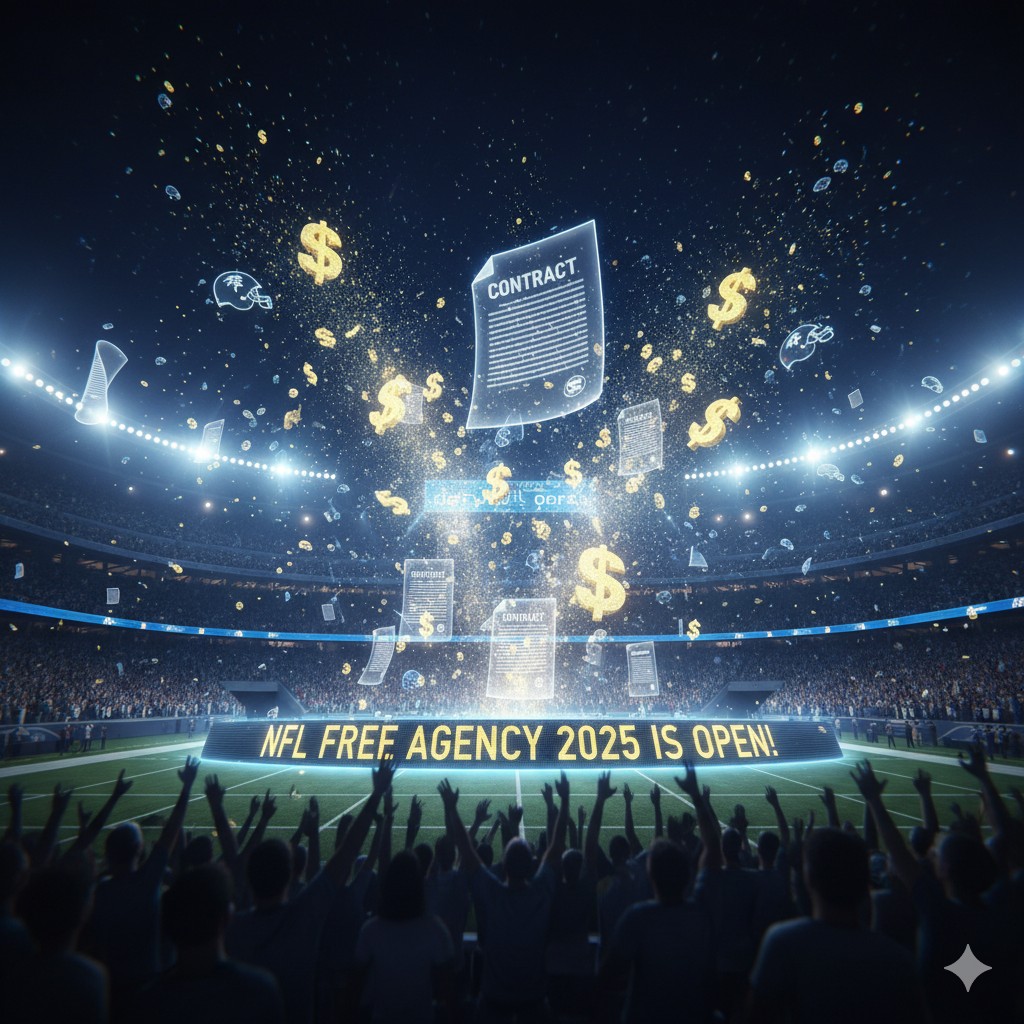

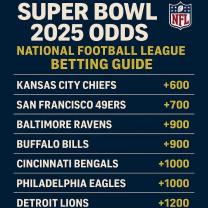

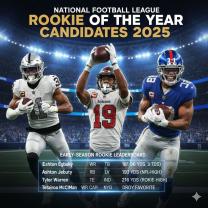
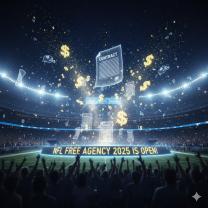
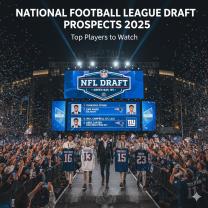
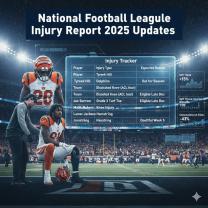


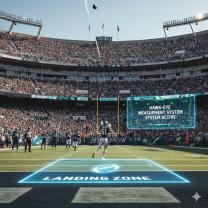

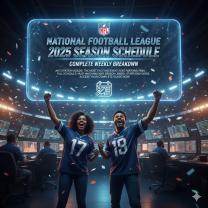

FranchiseTagSucks
on October 01, 2025It's tough to see **Tee Higgins** locked down by the franchise tag. It’s smart cap management by the Bengals, but it highlights how the tag removes star players from the market and limits the drama we want to see!